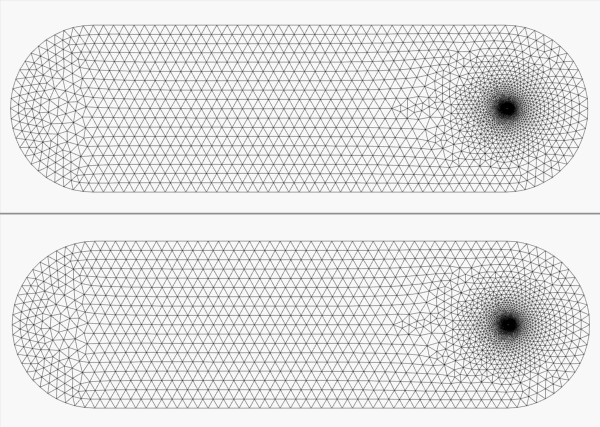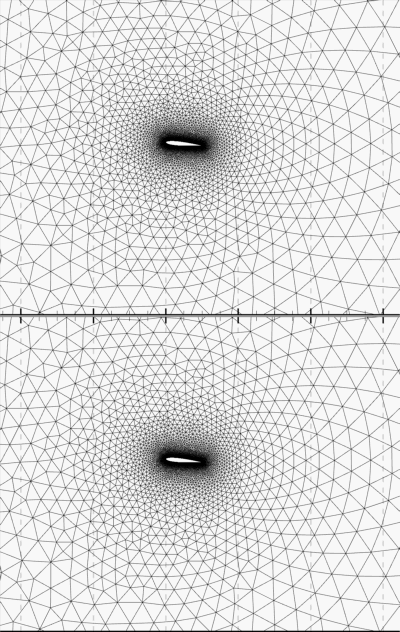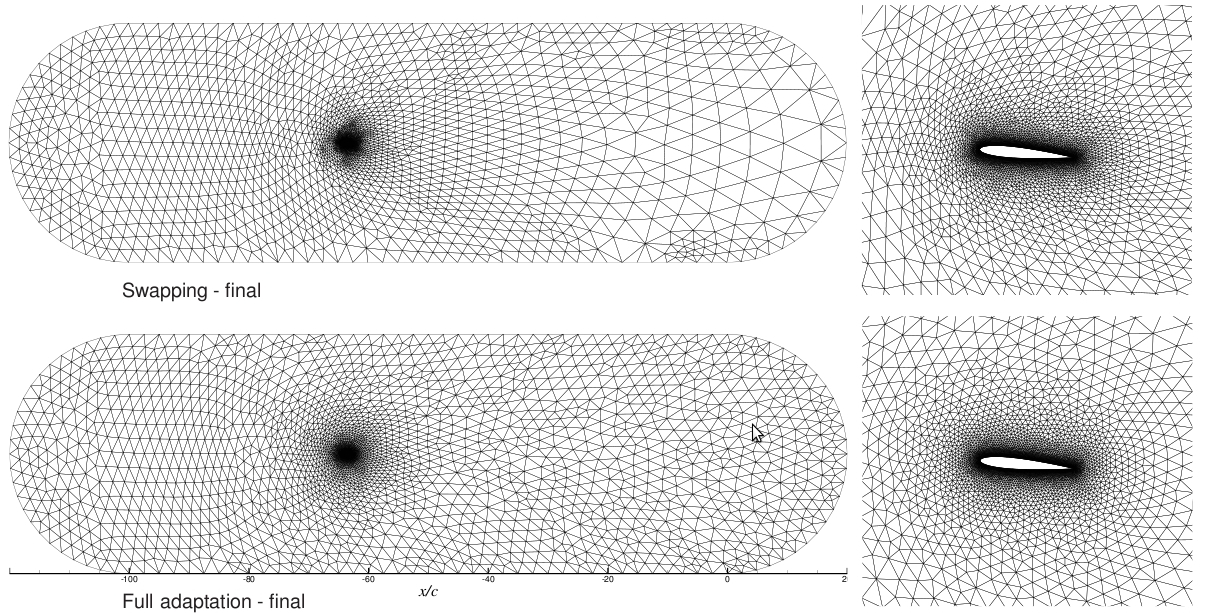Translating NACA 0012 airfoil
The motion of the grid is carried out resorting to edge swapping, node insertion, node deletion and grid deformation.
Remarkably enough, also
grid adaption, i.e., node insertion and
deletion, can be interpreted as the growth of a finite volume from a
point-wise (null) area into a finite area and vice-versa, respectively.
This idea has been already implemented and successfully tested in
two-dimensions with DCODE.
Another comparison between the two adaptation schemes is illustrated in Figure 7. A NACA0012 airfoil translates inside a fixed domain for 65 chords. The relative Mach number is M=0.55. As mentioned above simple node insertion/deletion techniques are required to control the grid spacing and, referring to Figure 5, aimed to maintain the initial grid spacing [4,5]. The reported example shows a significant gain in terms of overall grid quality with respect to the swapping-deformation case; moreover the initial nodes spacing is very well preserved.
The same example is also reported in Movie 5 and 6, where a comparison is performed between meshes obtained resorting to deformation and edge-swapping with the ones obtained applying also node insertions and deletions. The loss of quality of the mesh in terms of spacing distribution, due to a lack of elements close to the airfoil node and far behind the body, is avoided when the complete adaptation procedure is carried out.
Another comparison between the two adaptation schemes is illustrated in Figure 7. A NACA0012 airfoil translates inside a fixed domain for 65 chords. The relative Mach number is M=0.55. As mentioned above simple node insertion/deletion techniques are required to control the grid spacing and, referring to Figure 5, aimed to maintain the initial grid spacing [4,5]. The reported example shows a significant gain in terms of overall grid quality with respect to the swapping-deformation case; moreover the initial nodes spacing is very well preserved.
|
Figure 7.
Comparison between the final grids obtained with the mesh deformation
plus edge swapping method (top) and the complete adaptation scheme
(bottom). |
||
| Click on the image to enlarge |
The same example is also reported in Movie 5 and 6, where a comparison is performed between meshes obtained resorting to deformation and edge-swapping with the ones obtained applying also node insertions and deletions. The loss of quality of the mesh in terms of spacing distribution, due to a lack of elements close to the airfoil node and far behind the body, is avoided when the complete adaptation procedure is carried out.
 Movie 5. NACA0012 translation, comparison between the two adaptation schemes. |
||
| Click here to download |
 Movie 6. NACA0012 translation, comparison between the two adaptation schemes, close-up. |
||
| Click here to download |
